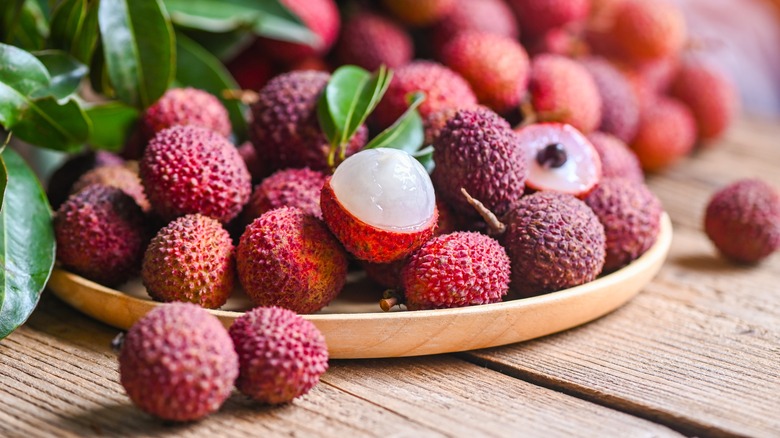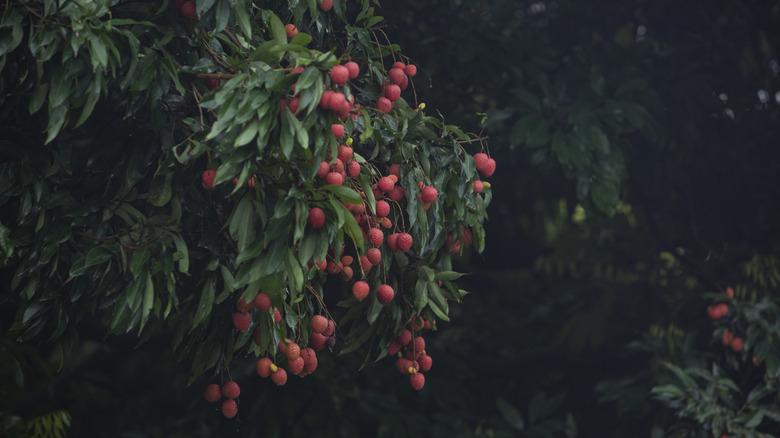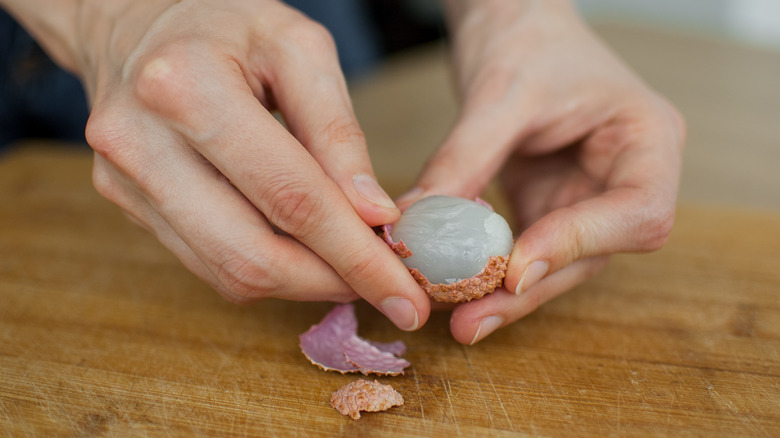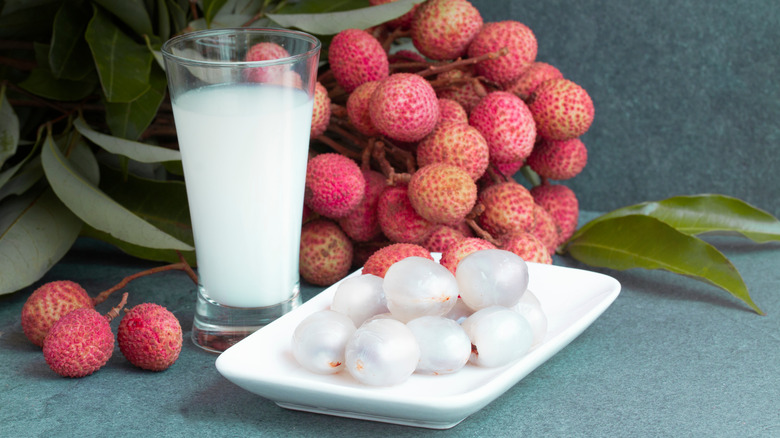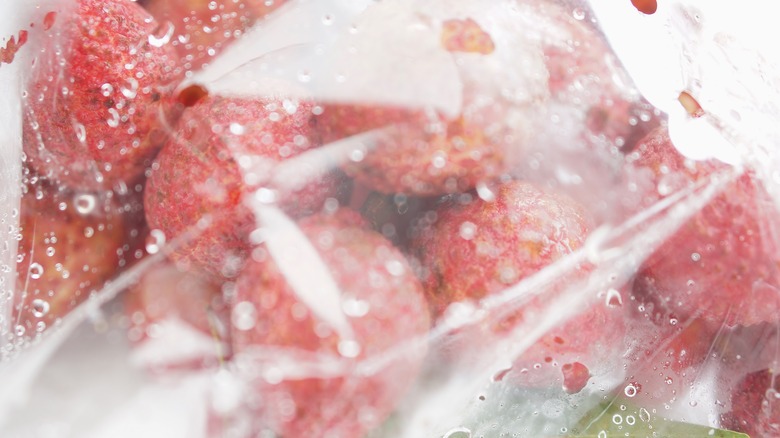How To Eat Lychee, For The Uninitiated
They may be best known as the star ingredient in a fruity martini or as a popular flavor for sorbets and ice creams. But there are so many more ways the tropical lychee fruit can be enjoyed — in fact, one of the best ways to consume lychee would be to eat it fresh, the way the fruit has been enjoyed in Asia for hundreds of years.
Lychees may have the imperial Chinese concubine Yang Yuhuan to thank for their popularity because legend has it that Emperor Xuanzong of Tang was so in love with Yang that he would have her favorite fruit brought to the capital Xi'an from Southern China — a distance which spanned over 1,035 miles. Today, lychee fans don't have to travel too far to get the fruit as it is now grown in India, Vietnam, Malaysia, Cambodia, Taiwan, and Thailand. Lychee trees can even be found in Hawaii, Florida, Texas, and California today.
How you know if a lychee is ripe
Lychee trees may take up to ten years before they can produce fruit, and when it finally happens, lychees need to spend anywhere between three to four weeks on the branch from the time its buds appear to the time fruits become fully ripe. And while some fruits have the ability to ripen after they are picked — including bananas, mangoes, peaches, and kiwis — the same cannot be said of lychees, so it is important that this particular fruit is harvested at the right time.
You'll know lychee is ripe when its bumpy outer shell is either pinkish or reddish in color, with no hint of green anywhere on the peel. To be certain, you can also pick one and break it open. The flesh of ripe lychee should appear creamy white, and it should taste sweet with a bit of tang. Its texture will be soft, juicy, and smooth, and its aroma has been described as both fruity and floral.
But the fruit needs to be firm to the touch. If it is soft or mushy, wet, and oozes, the lychee is most likely past its prime.
How to peel lychees
Unlike some fruits which can be consumed, skin and all, lychees need to be stripped of their rough, prickly exterior before you can get to its enticing, jelly-like flesh beneath.
It's easy to be baffled by lychee (or litchi, as it is known in some parts of the world) if you haven't seen one before, especially since the fruit is completely enclosed by an inedible peel. But it is also easy to crack through the fruit's red, brittle skin to get to the edible flesh beneath. To peel lychee, just pinch a part of the skin between two fingers, then peel that portion away from the whole fruit. Continue taking the bumpy skin off until the whole of the fleshy fruit underneath is exposed.
Alternatively, you could also gently squeeze the whole fruit at either its top or its base until its skin cracks, then gently peel the skin away to get to the fruit beneath.
How to serve lychees
When they are in season, fresh lychees are a treat that can be enjoyed on their own, since they are sweet, juicy, refreshing, and more-ish. So if you happen to get your hands on some, the fruit is certain to be a hit. If you don't feel like eating the fruit fresh, bits of it can also be cut up and either incorporated into salads or made into a confection.
Lychees can be enjoyed when they've been preserved too — and some might even argue that lychees may be more versatile when they come out of a can, because their flavor doesn't change too much, and the canned fruit isn't as fragile as the fresh fruit. Canned lychees can be used to make ice creams or sorbets; they can also be used to make blended alcoholic drinks.
And if you've ever heard of a lychee martini — that we brought up right at the start — know that the drink would be difficult to make without the canned fruit. You need a piece of the fruit and syrup from the can as key ingredients.
How to store lychees
Lychee fruits grow in clusters, and they are harvested by cutting the entire branch from where a cluster hangs. The fruit is best stored refrigerated, where temperatures are set at 30 to 45 degrees Fahrenheit. They need to be stored in sealed plastic containers since coming in contact with the cool air will cause their skin to go from pink to brown in a brief amount of time.
But the change in color does not have an impact on the fruit's flavor. If they are kept in the fridge, lychees could go for as long as five to seven days — but when kept at room temperature, lychees will keep for between two to three days.
If you want to peel your lychees, your best bet would be to freeze them, where they will remain good for about six months. They can even be frozen with the skin on — just remember to defrost the fruit in the fridge overnight before eating them. Having said that, frozen lychees can be enjoyed as is, or blended and drunk as a smoothie.
